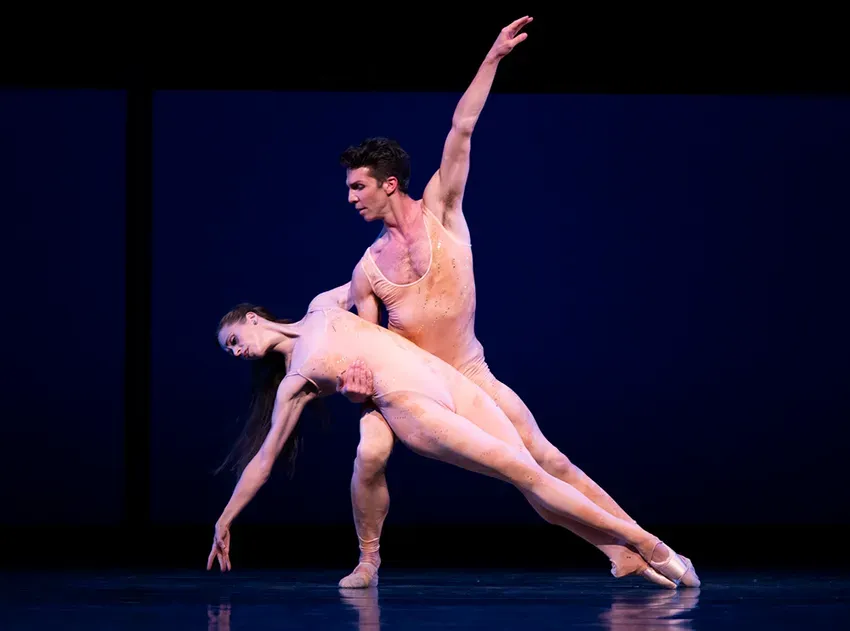Pacific Northwest Ballet kicks off its 50th season with a brilliant trifecta of new and classic dances
Carmina Burana by Kent Stowell
Wartime Elegy by Alexei Ratmansky
Allegro Brilliante by George Balanchine
PACIFIC NORTHWEST BALLET
MCCAW HALL
SEPTEMBER 23, 2022
What better way for the Pacific Northwest Ballet to celebrate its 50th year than to honor three choreographers who have helped to define its world-class repertoire? Audiences were charmed on opening night by Balanchine's lovely Allegro Brilliante, moved to tears, laughter, and tears again by Ratmansky's tribute to Ukraine in Wartime Elegy, then electrified by Kent Stowell's epic, over-the-top Carmina Burana. What an evening it was for the dance lovers and loyal supporters who turned up in great numbers for the return of this beloved company!
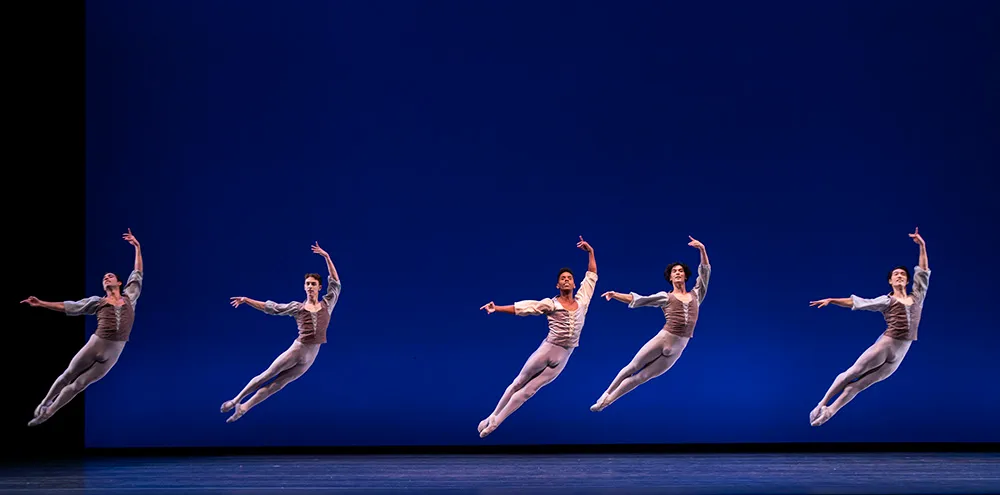
The evening began with the luminous Angelica Generosa and elegant newcomer Jonathan Batista leading four couples through the flowering geometry that characterizes Balanchine's most beautiful dances. This was the perfect selection to showcase the choreographer's iconic ideas that revolutionized ballet: non-narrative narratives, intricate interweavings, angular shapes, dazzling dexterity.
Moments that stood out for me in the flow of spectacular precision to Tchaikovsky's Piano Concerto No. 3 (kudos to PNB pianist Christina Siemens!) were passages where the five men leaped in short intervals like fabulous popcorn; when Batista performed his lightning-fast entrechats; and the perfect unison of all eight dancers when the couples performed their diagonals, lifts, twirls – it was as if one perfect couple had miraculously divided into four couples to amplify each brilliant movement.
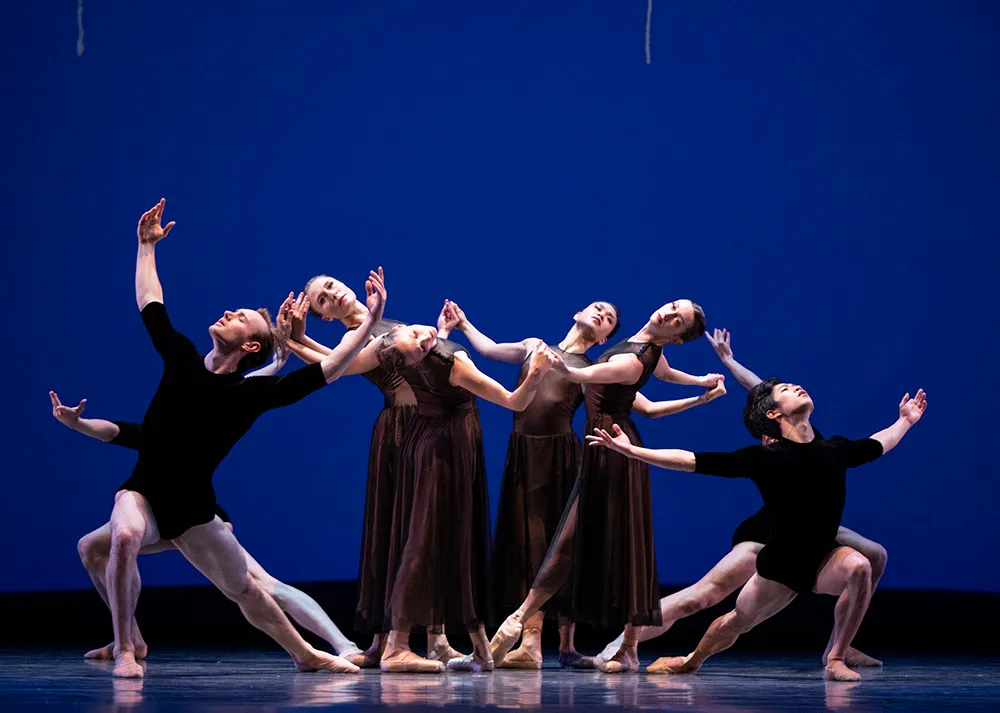
This great opening was followed by the world premiere of Alexei Ratmansky's extremely moving Wartime Elegy, performed by eight dancers – four men, four women – in front of haunting images by scenic designer Wendall K. Harrington and artists Matvei Vaisberg and Maria Prymachenko. The dances representing conflict and loss – wavelike movements of heaped and falling bodies – were backed by large paintings of single figures draped in robes, suggesting ancient sculpture (the long history of war). The images had broken limbs or missing features like fallen statues – a vivid summation of death. The dances of ancestral village life, however, had backdrops of colorful folk art and flowers.
Ratmansky's slow, devastated movements in the war sections only had their full impact when time was reversed, and we saw the humor and delights of peacetime in the form of Ukrainian folk music and social dancing. Couples danced together with polite exuberance in familiar folk patterns of squares and circles, followed by the young men performing rowdy, drunken, hilarious show-off dances before the women returned with their own flirtatious display. To the plucky tunes of the balalaika, as we laughed at and cheered the charm and inventiveness of these young dancers, the audience began to realize that these beautiful people, full of fun and optimism, are the innocent fodder of war that we saw in the first section, whose deaths return in the final section.
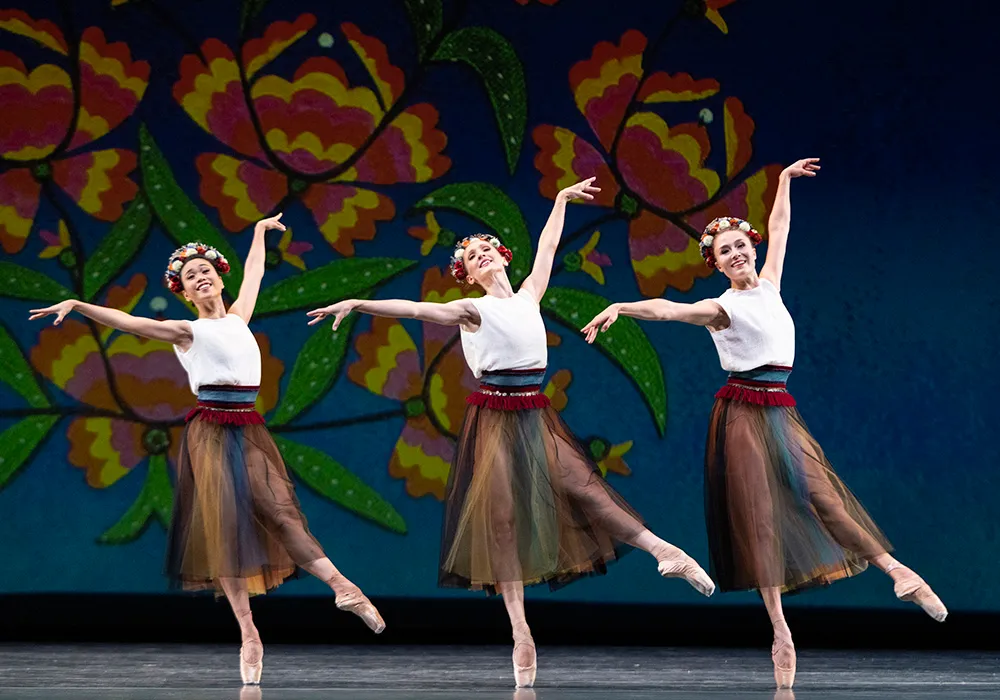
Ratmansky, together with composer Valentin Silvestrov's original music and the use of Ukrainian village music, shows us a culture's charm, history, and devastation. At the curtain call, Ratmansky (whose family is from Ukraine) came out waving the Ukrainian flag to the standing ovation of the audience. What a tremendous premiere, and how proud PNB must be to have made it happen! It's a gift to ballet companies everywhere, especially – we can hope, someday – in a free Ukraine.
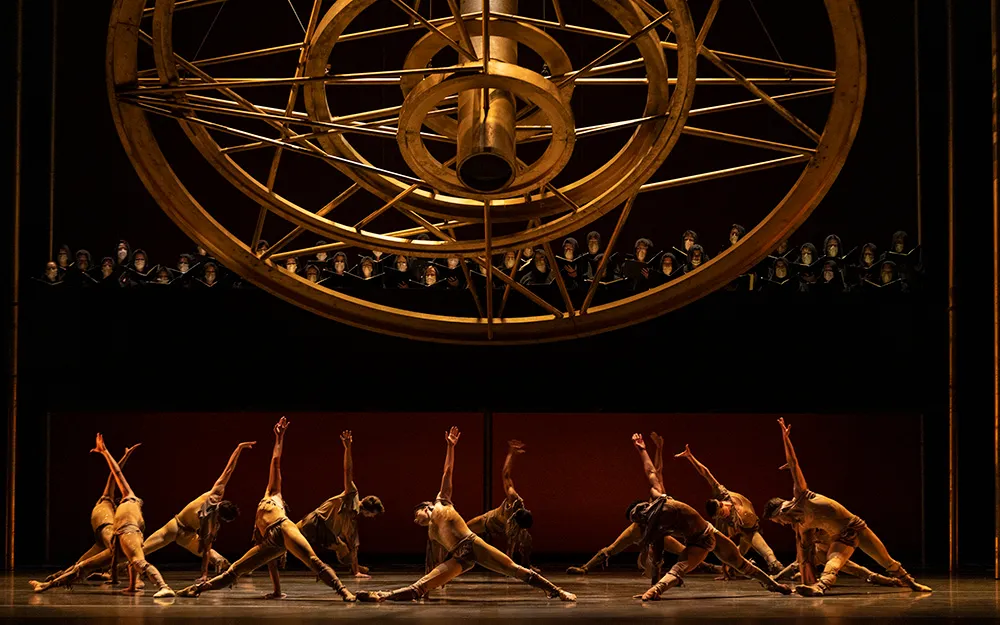
An audible gasp went up from the audience when McCaw Hall's sparkling red curtain rose to reveal the set of the final dance of the evening: a black-cowled chorus of 50 singers (the Pacific Lutheran University Choral Union) suspended in a loft behind a monstrous golden wheel of fortune – three wheels-within-wheels on a central axle – rotating to the magisterial chorus "O Fortuna":
O Fortune
like the moon
you are changeable
ever waxing and waning
first oppresses
and then sooths
as fancy takes it...
The lyrics continue in that vein – dark and scary – as the theme of mankind's fragility and helplessness in the face of blind fate is developed:
Fate – monstrous
and empty,
you whirling wheel,
you are malevolent,
well-being is vain
and always fades
to nothing
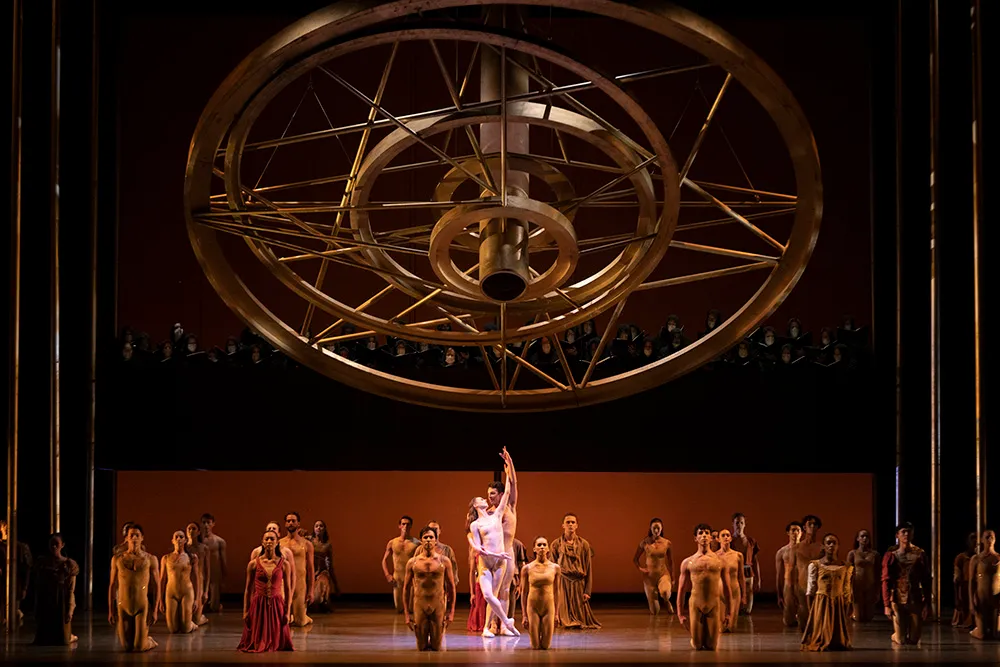
Far from being depressing, this weighty message is delivered in Latin without supertitles, so the audience has to sort out for themselves the meaning of the ancient poems. But since the dancers represent groups of naked Adams and Eves (in "skins") together with country bumpkins, a femme fatale, and common folk dancing in hopeful circles, it's not too hard to guess that we're seeing the evolution of human life and longing. I was especially impressed with the dramatic entanglements of the Adams and Eves, who reappear periodically to remind each episodic group of the fundamental search and necessity of love.
The full company of dancers provided wonderful rhythmic movement as the wheel of fortune lifted into a horizontal position and the pantomime of dancers from the "cavemen" to nudes to the country dancers enacted a full range of human feelings and emotions.
Of all story ballets Kent Stowell has choreographed, I think this dance is his finest, the one that will remain in the repertoire for many years. It's a great combination of mystery, vocal and orchestral music, intriguing dances, and the poetry of love and longing common to all humans. It's a wonder and a joy to behold, and a great finale for an evening of celebration.
Congratulations, PNB, on 50 years of encouraging dancers, musicians, choreographers, artists, students, and audiences to love ballet in all its forms. Kudos from a grateful audience!
Carmina Burana will be performed at McCaw Hall through October 2. More information is at https://www.pnb.org/season/carmina-burana/.


